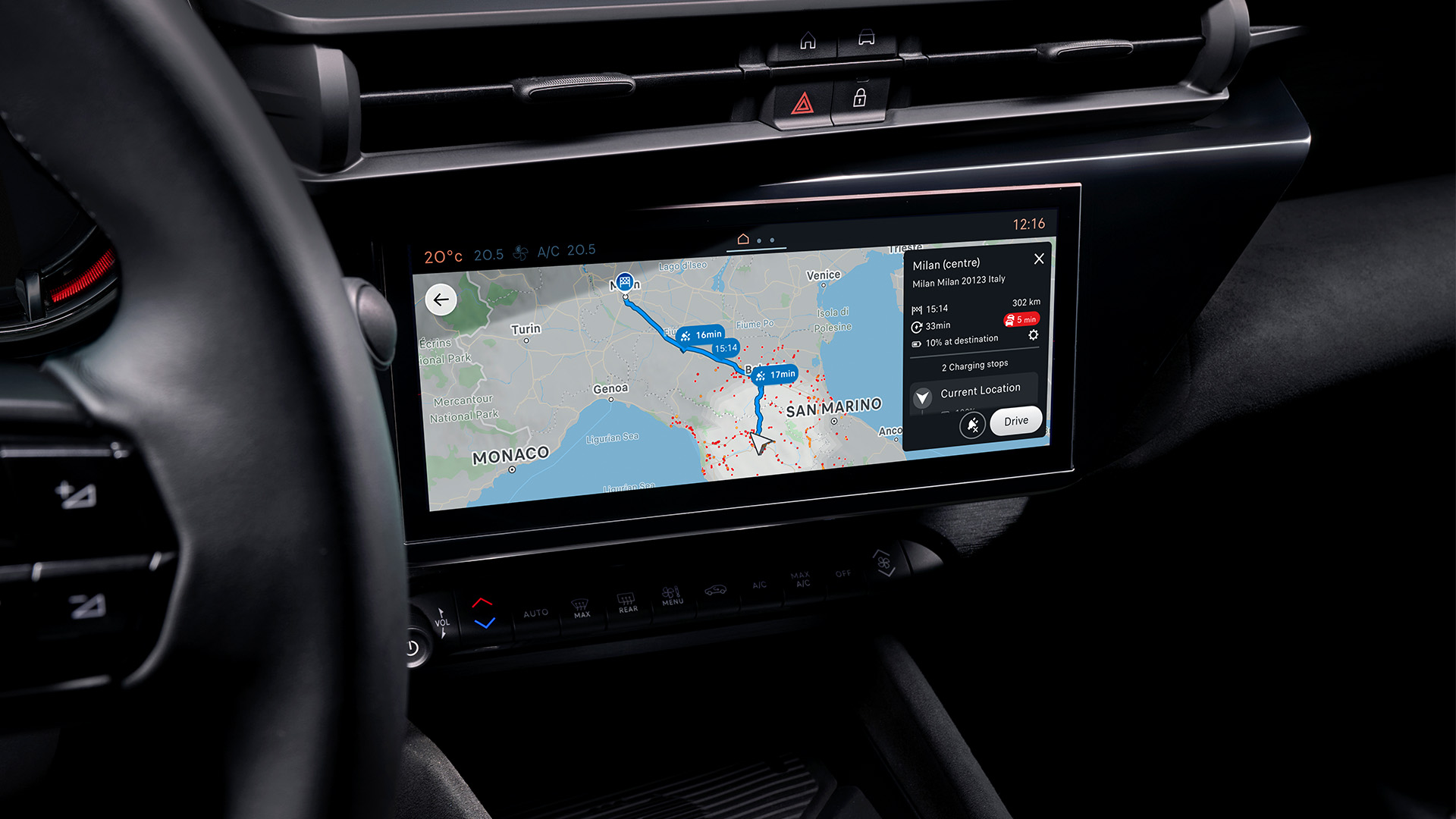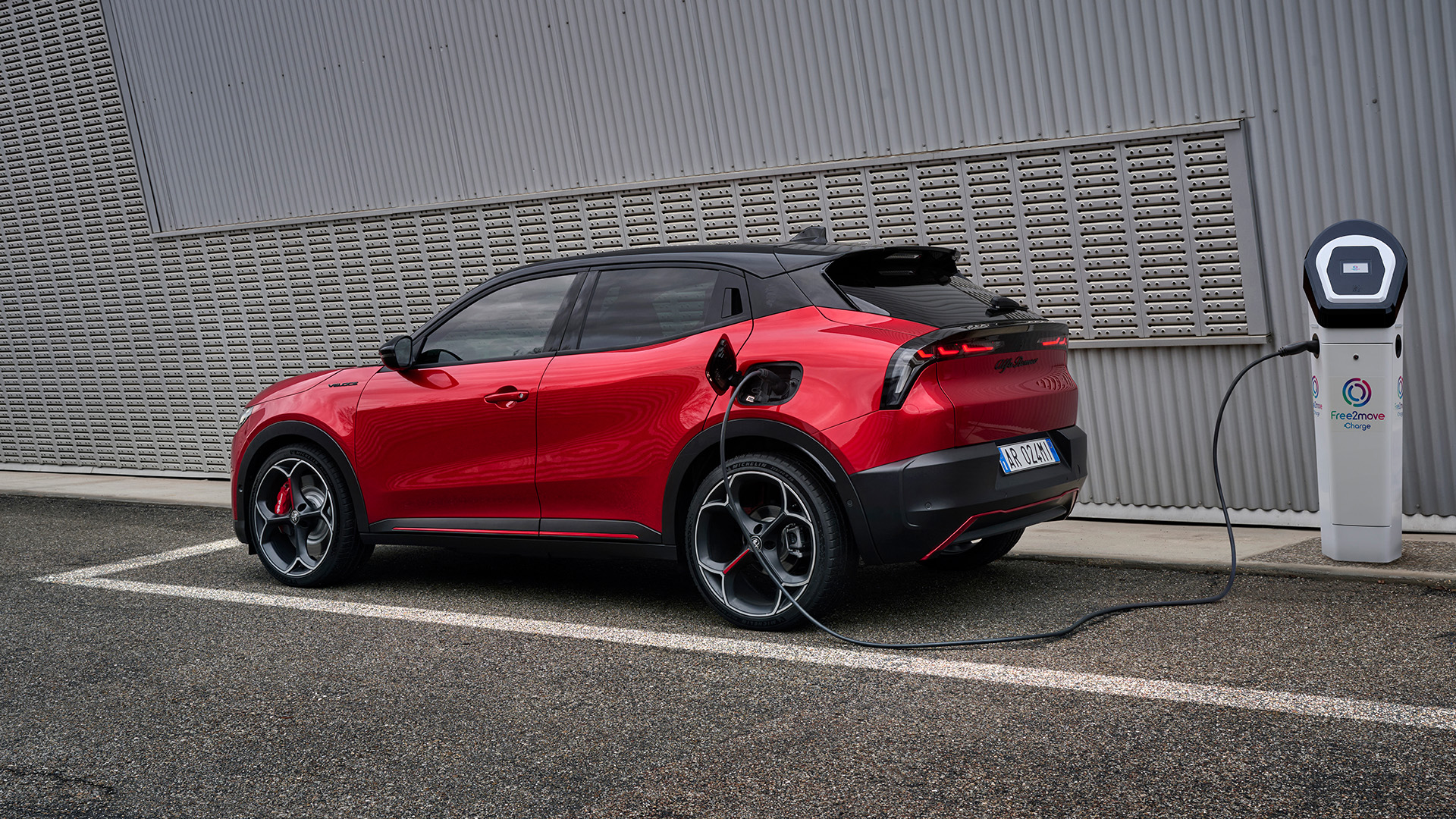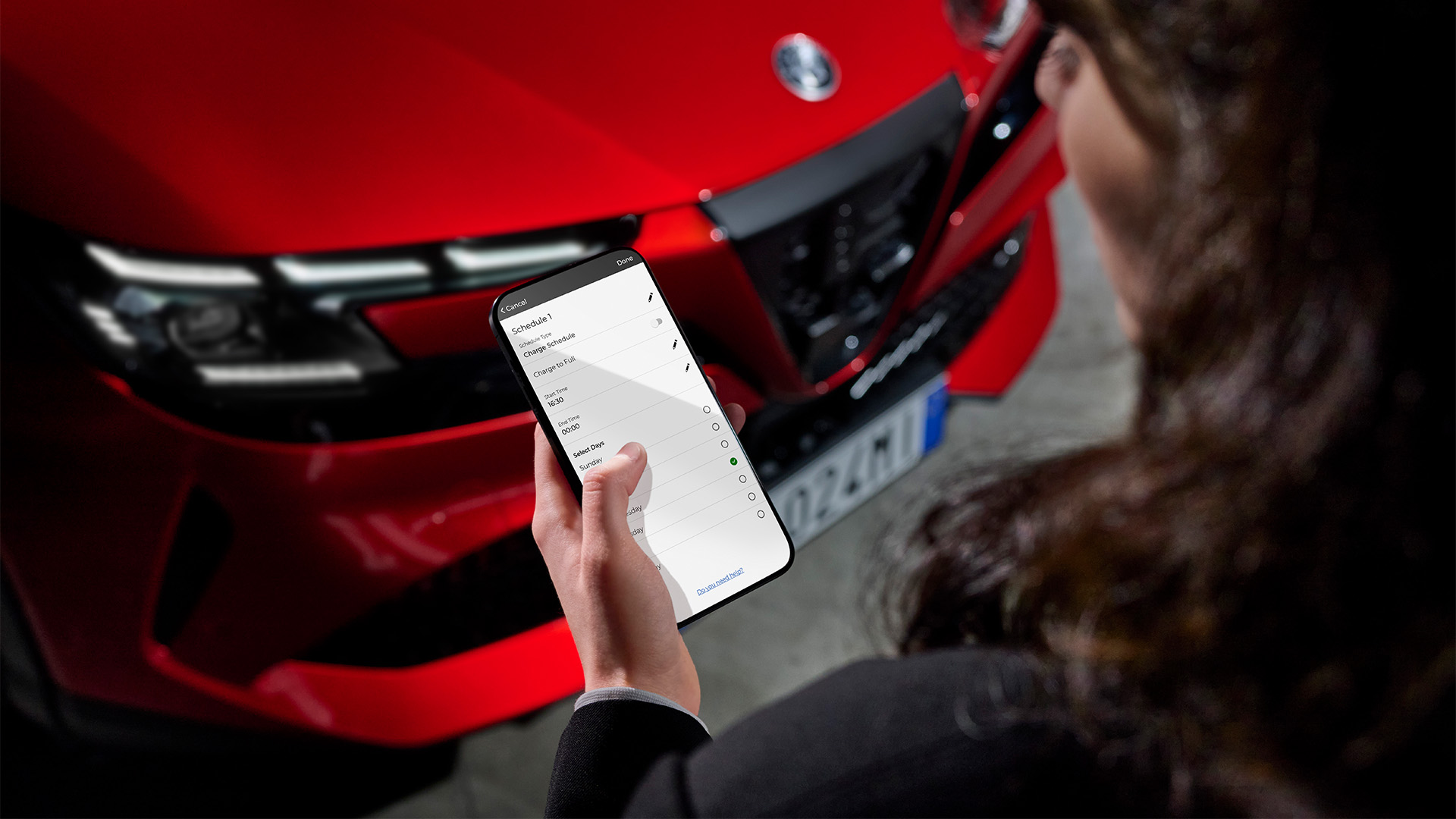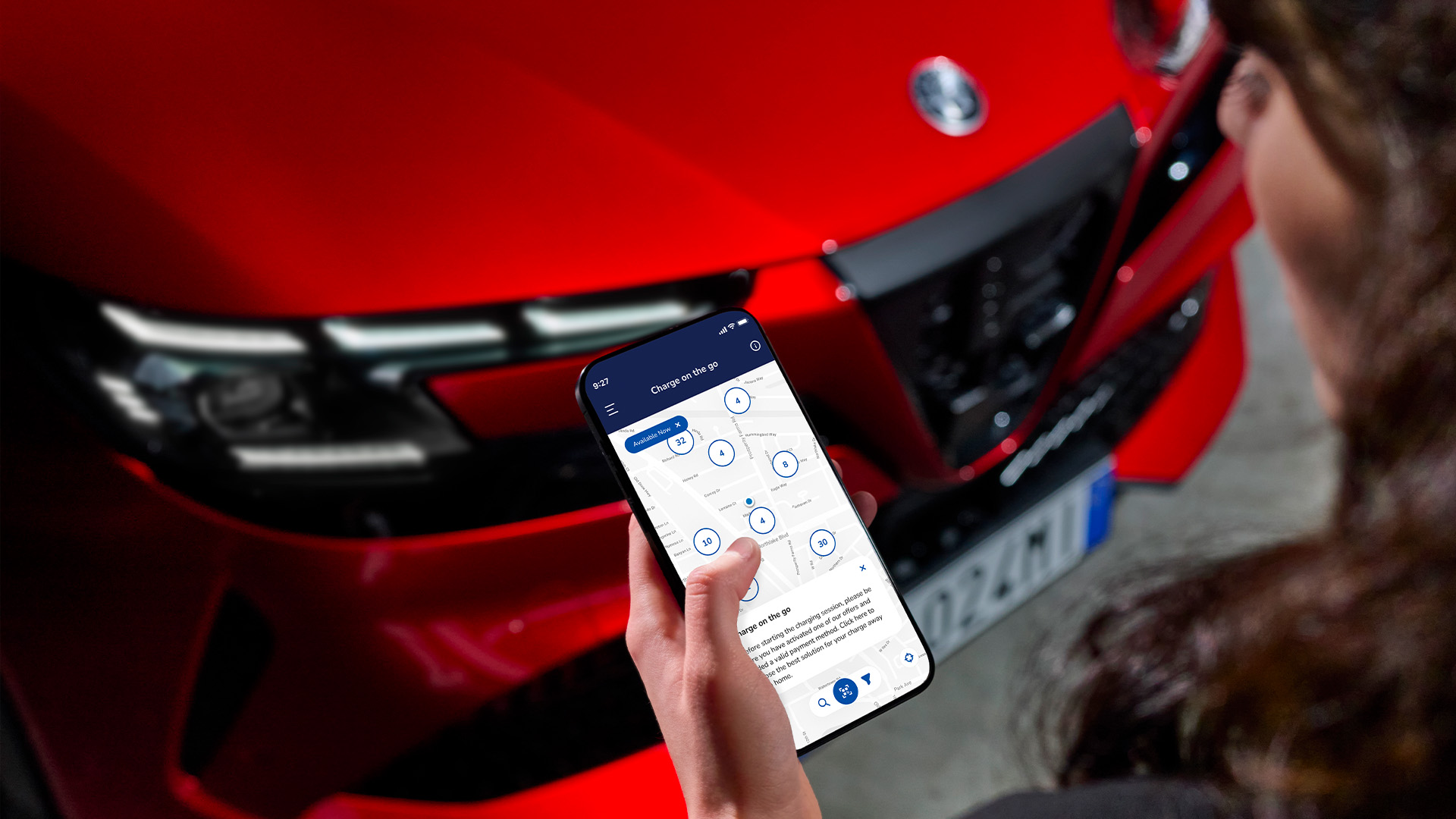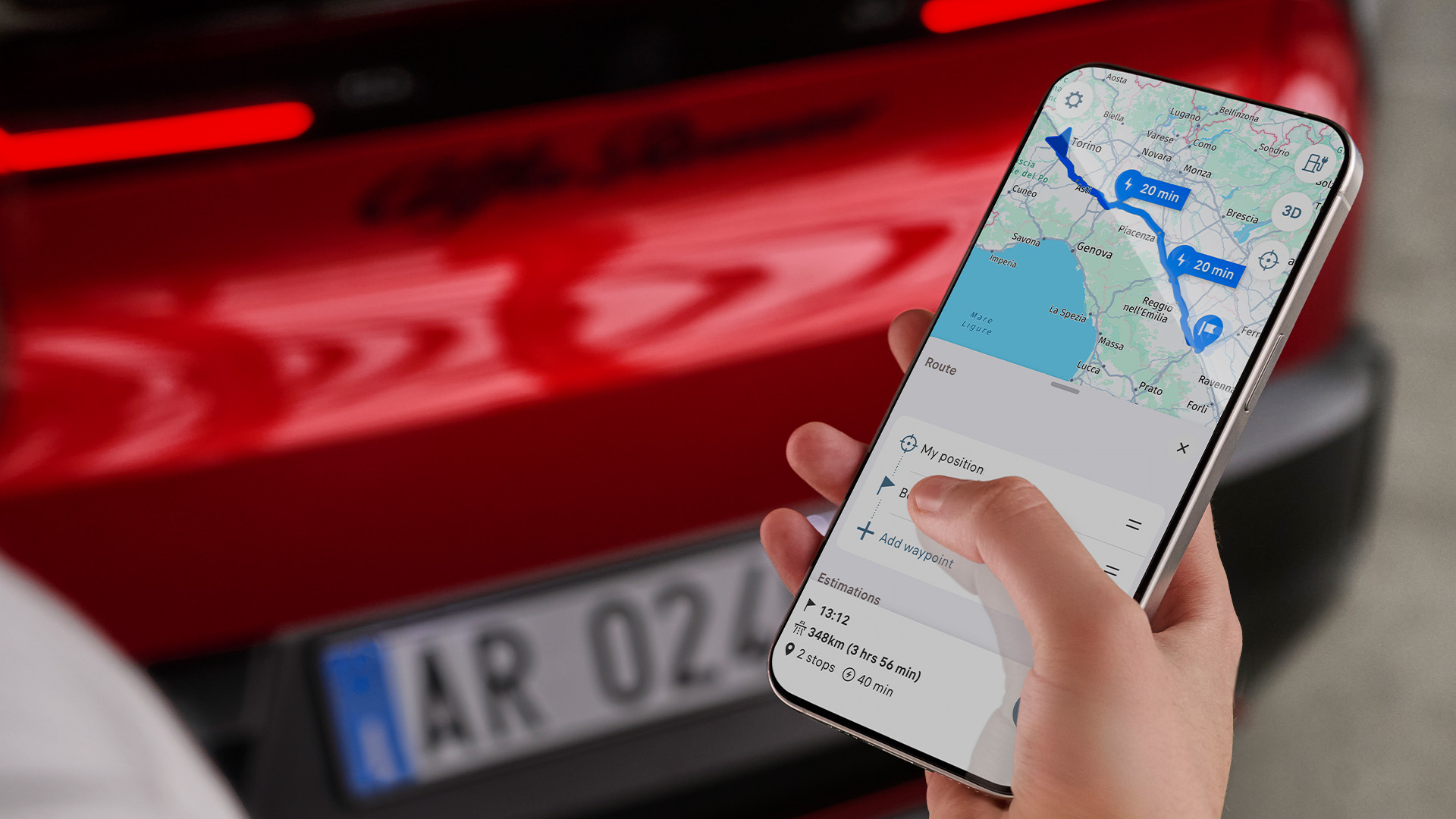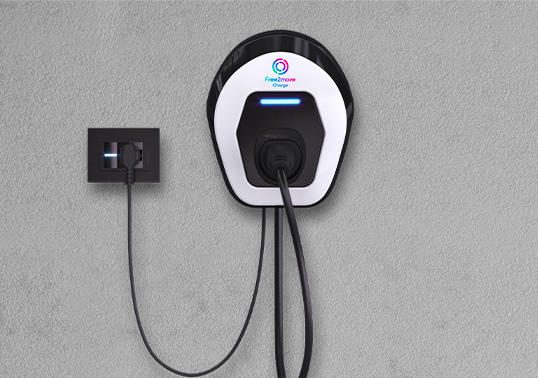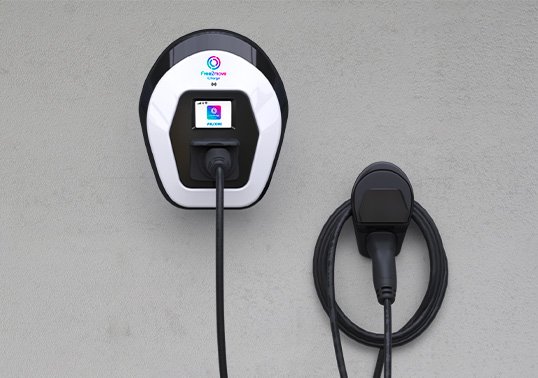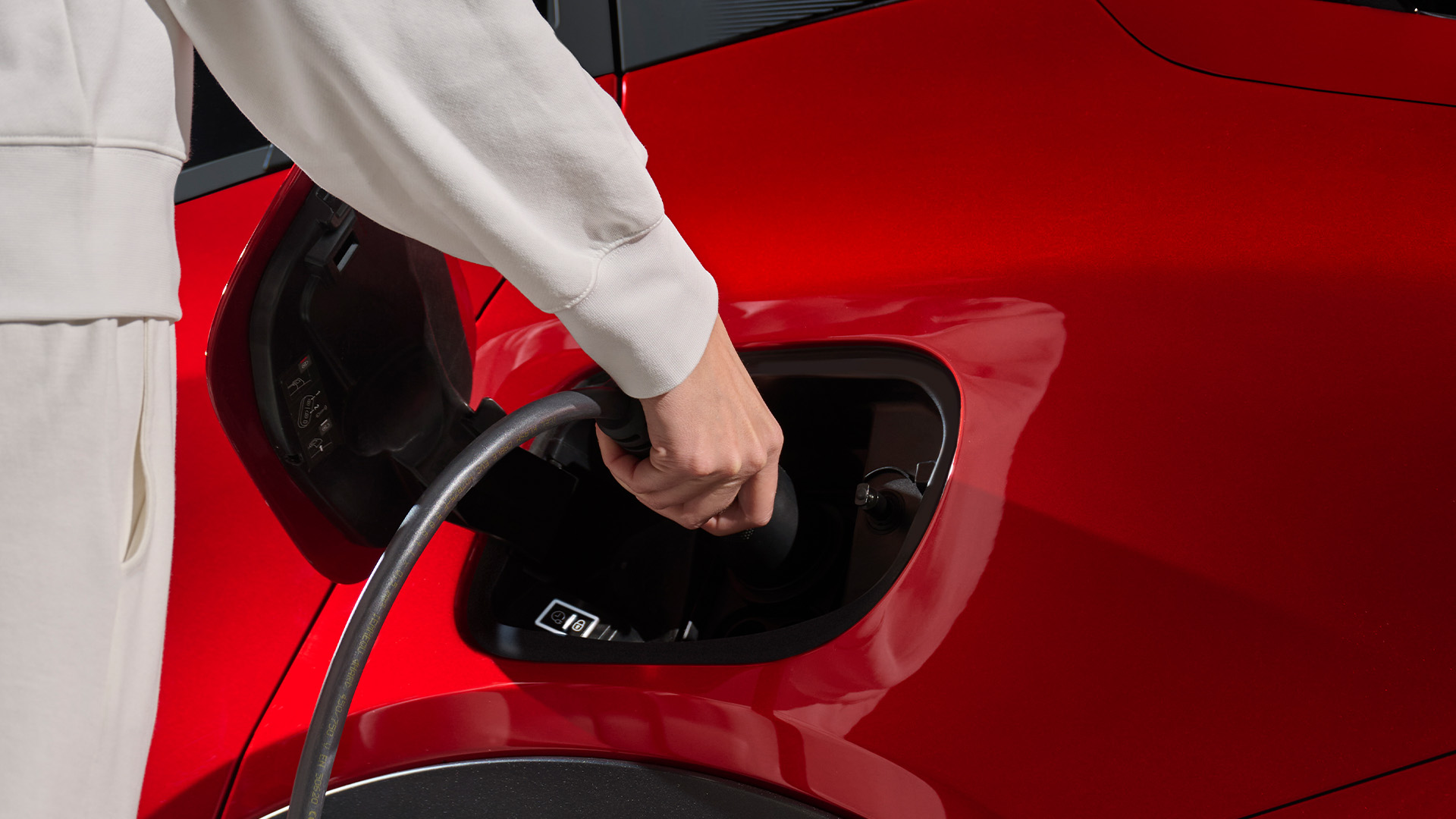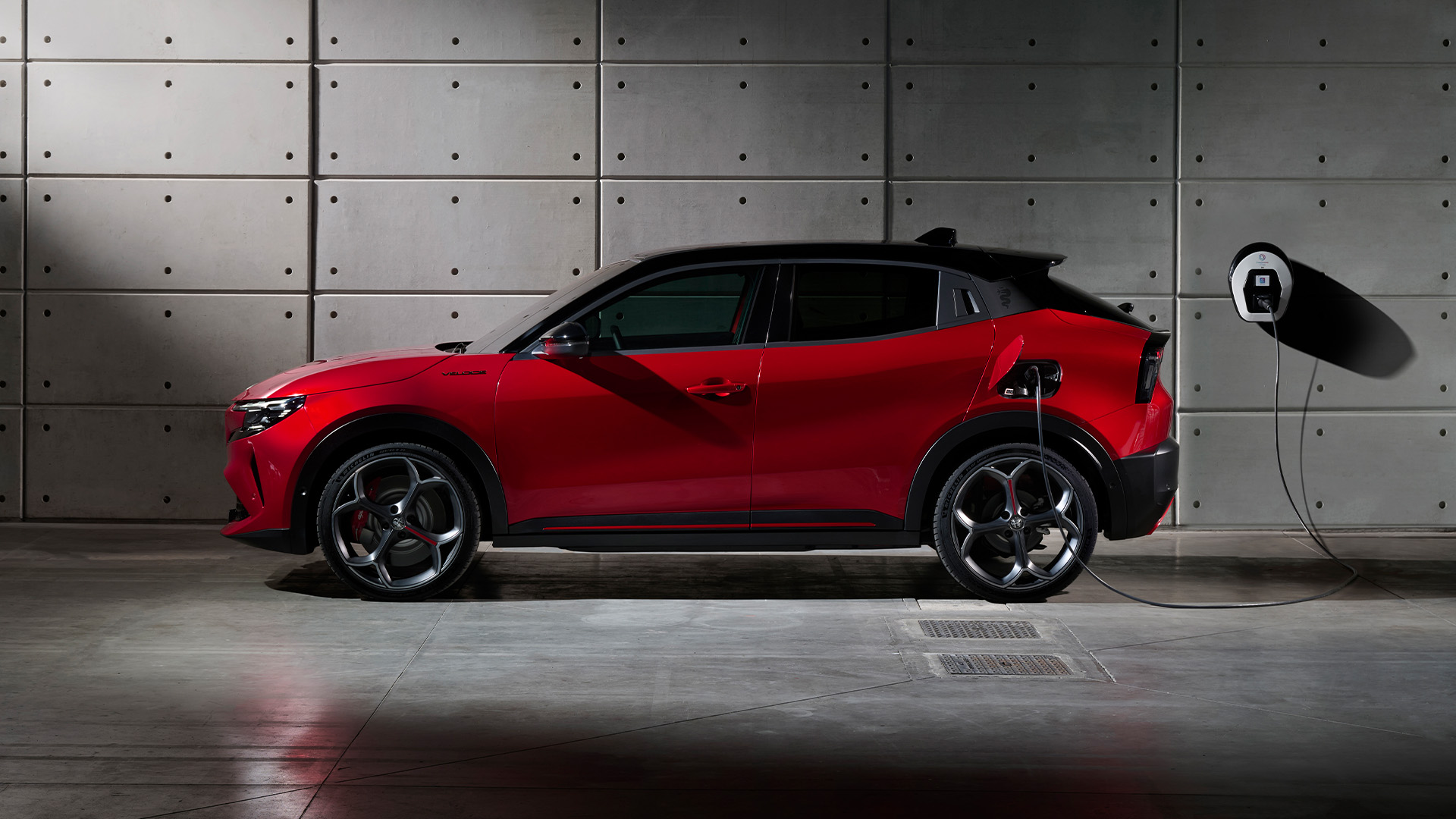AN ELECTRIFYING NEW ERA
Italian sportiness and visceral driving pleasure. The unique DNA of Alfa Romeo has become the catalyst for a new way of interpreting electrification, marking an unprecedented moment in the history of the Brand. The result? Sustainable mobility and zero CO2 emissions for outstanding performance and great cost efficiency.
That's how the Alfa Romeo Junior Elettrica was born. Explore the website to find out more details about the advantages of electric cars.
PEACE OF MIND
More than 600,000 public charging spots in Europe and a wide array of intelligent solutions that enable you to manage the charging of your electric car using your smartphone or smartwatch.
URBAN SOUL
Electric cars allow easy access to low emissions zones and simplifies the search for available parking lots, making your journeys across the city nearly silent and totally stress-free.
BENEFITS
Tax benefits, government incentives, and low running costs. Choosing an Alfa Romeo electric car means opting for significant advantages from a financial standpoint.
PERFORMANCE
Pure thrills on your everyday road trips. The new Alfa Romeo Junior Elettrica ensures excellent driving dynamics and extraordinary performance. In short: next-level sportiness.
HOW DOES AN ELECTRIC CAR WORK?
Electric vehicles are provided with a sole electric motor powered by a rechargeable battery - instead of traditional fossil fuels. This ensures zero CO2 emissions and a lower environmental impact than gasoline cars.
When pressing the accelerator, electricity from the battery is sent to the motor, which converts it into rotational energy. You can recharge the battery by plugging the car into a power source, typically an electric outlet or an electric vehicle charging station. Additionally, the carbon footprint of electric vehicles can be further reduced when powered by renewable energy sources like solar or wind.
THE DIFFERENCE BETWEEN HYBRID AND ELECTRIC CARS
While electric vehicles only need a battery and an electric motor to run, hybrid cars are powered by an internal combustion engine working alongside an electric motor. Moreover, thanks to regenerative braking technology, hybrid vehicles can also recharge their battery when driving, while electric cars only recharge their battery if plugged into a power source. Find out more about hybrid technology and discover the differences between the Junior Elettrica and Junior Ibrida.
ALFA ROMEO JUNIOR ELETTRICA
With a WLTP combined range of 410 km, the Alfa Romeo Junior Elettrica offers a top speed of over 200 km/h (Veloce version). Using DC fast charging, this compact electric car can be recharged from 20% to 80% in less than 30 minutes.
Learn more about the range of services designed to take your journeys to the next level.
HOME CHARGING
Domestic power supplies are useful for those who want to charge the battery of their electric vehicle during the night. Charging at home means your car will be ready to hit the road the following morning. The energy provided by each device varies according to the model's charging capacity, which determines its charging time: from 8 to 12 hours with a standard outlet and less then 30 minutes using DC fast charging. Explore the range of home charging stations compatible with your Alfa Romeo.
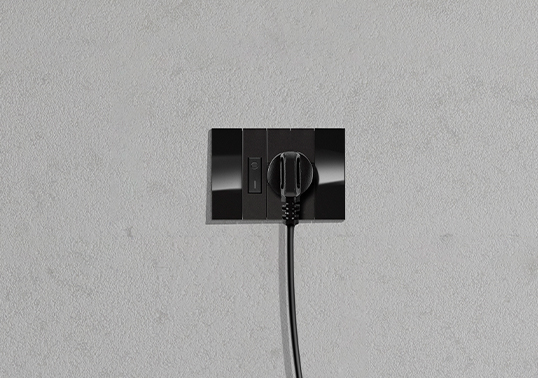
Standard outlet
You can charge your electric vehicle at home using the domestic AC electrical outlet and a Mode 2 Cable - available as an accessory and capable of charging the battery up to 2.3 kW at a standard speed.
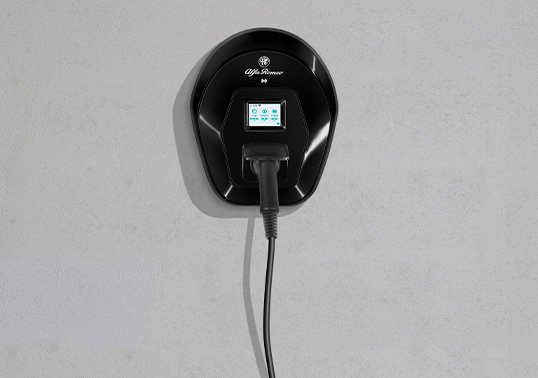
Alfa Romeo eProWallbox*
Featuring a touchscreen display, the Alfa Romeo eProWallbox can supply up to 22 kW electric energy. Fast, smart, and powerful, it takes advantage of RFID identification technology and 4G connectivity to ensure you can control the charging process remotely.
*The eProWallbox branded with the Alfa Romeo logo is available for purchase exclusively through the Alfa Romeo dealership network.
WALL BOX INSTALLATION
Free2move Charge offers a professional installation service, in line with the government eligibility criteria. You can have your easyWallbox or eProWallbox installed in a few simple steps.
PUBLIC CHARGING
Using public charging stations is becoming increasingly accessible as the charging network continues to expand. Free2move Charge offers tailored solutions and access to over 740,000 charging points across Europe, making it easy to recharge your electric vehicle wherever you are. The battery pack can be fully charged in less then 30 minutes using DC fast charging.

YOUR CHARGE, ALWAYS AT HAND
With the RFID card provided with your Alfa Romeo Junior Elettrica, you can effortlessly access the extensive Free2Charge network. This card unlocks 99.9% of the 740,000 public charging stations across Europe.

MY ALFA CONNECT
With My Alfa Connect app, get access to all connected services of your Alfa Romeo. You can plan your next journey considering the reachable range around your location and find the nearest charging station. You can easily access the Free2move Charge and also manage your wall box at home remotely.
Combined energy consumption of the Alfa Romeo Junior (kWh/100km): 15.0 - 15.5; CO2 emissions (g/km): 0. Electric range (km): 410 - 398 according to EU directive 1999/94. Values determined based on ongoing official tests prescribed by the approval procedure and measured according to the WLTP cycle. Preliminary values subject to confirmation during the approval process. The values indicated are for comparison purposes only. Energy consumption of the Alfa Romeo Junior Elettrica Veloce (kWh/100km): 17.9; CO2 emissions (g/km): 0. Electric range (km): 334. Preliminary values measured according to the WLTP cycle during pre-approval testing activities and could vary before final homologation. The values indicated are for comparative purposes only. Energy consumption and CO2 emissions figures may vary depending on actual usage conditions and various factors, such as options, temperature, driving style, speed, vehicle weight, specific equipment (air conditioning, heating system, radio, navigation, lights, etc.), tires, road conditions, weather, etc.
You can charge 20% to 80% of the car’s battery in under 30 minutes at a 100kW rapid charging station.
FURTHER DETAILS ABOUT ELECTRIC CARS
ELECTRIC VEHICLES
The term “electric car” typically refers to all vehicles that use only electric motors powered by rechargeable batteries to drive the wheels - instead of traditional fossil fuels. Given the absence of an internal combustion engine, these cars produce zero CO2 emissions while running, which makes them more environmentally friendly than conventional vehicles.
Electric cars are equipped with a battery pack and an electric motor - their primary propulsion system. When you press the accelerator, electricity from the battery is sent to the motor, which converts it into rotational energy. The battery pack is charged by plugging the car into a power source, typically an electric outlet or an electric vehicle charging station. Charging can take place at home or at public charging points.
Electric motors can generate varying torque and power without the need for gear changes. So in that sense, you could say EV cars are automatic. However, they don't have the same type of automatic transmission as a conventional car: it is simpler, often consisting of just one gear or no gears at all. This is because electric motors can deliver maximum torque from zero RPM (revolutions per minute), eliminating the need for multiple gears.
In many countries, electric cars are subject to road tax, but the rates and policies often differ from those for traditional gasoline or diesel vehicles. Some governments offer exemptions or reductions in road tax for electric cars to encourage their adoption and support the transition to clean mobility. We recommend you check the current regulations in your region.
Many countries incentivize the adoption of electric vehicles through various financial incentives. These include purchase incentives such as tax credits or rebates, and benefits such as congestion charge exemptions, easy access to low emissions zones, and free parking. Also in this case, incentives can differ greatly from one country to another and are subject to change over time as governments adjust their strategies.
ENGINE TYPES
Producing zero CO2 emissions, EV cars have a lower environmental impact than gasoline cars. Additionally, the carbon footprint of electric vehicles can be further reduced when powered by renewable energy sources like solar or wind. Lifecycle analyses show that while the production of electric vehicle batteries has environmental implications, advancements in battery technology and recycling methods are improving sustainability.
- ICE: Internal Combustion Engine. This refers to the traditional thermal energy engine (petrol, diesel, etc.), where fuel combustion is activated through an oxidizer (usually air) inside a combustion chamber that is an integral part of the fluid movement circuit.
- HYBRID: This type offers a combination of an internal combustion engine and an electric motor, as seen in models like the Alfa Romeo Tonale Ibrida and Alfa Romeo Junior Ibrida. The battery is charged by the internal combustion engine and regenerative braking. In vehicles like the Alfa Romeo Tonale Ibrida and Alfa Romeo Junior Ibrida, when the battery is charged, this technology allows for several driving manoeuvres in full electric mode. Based on customer benefits and the level of electrification, some solutions are often referred to as Mild Hybrids (MHEV). In these cases, full electric traction is not possible.
- PLUG-IN HYBRID: Plug-in hybrid technology also combines an internal combustion engine with an electric motor. TIn models like the Alfa Romeo Tonale Plug-in Hybrid Q4, the battery is charged from an external source (charging socket) and through regenerative braking.
- BEV: Battery Electric Vehicle. Traction is exclusively provided by an electric motor, as seen in the Alfa Romeo Junior Elettrica. Driving is electric, and charging is achieved only through an external source and regenerative braking.
- REEV: Range Extended Electric Vehicle. This type has a small gasoline-powered generator to recharge the battery and allow extended range when the battery level is low.
An electric car offers lower operating costs thanks to reduced fuel and maintenance expenses. Additionally, it contributes to environmental sustainability by producing fewer greenhouse gases and improving air quality. Moreover, an electric car provides an enhanced driving experience with silent operation, smooth acceleration, and instant torque, making it both efficient and enjoyable to drive.
RECHARGE
Charging an electric car is easy, with options available for charging at home, work, or public charging points. To charge, simply plug your car into the charging station using the appropriate connector. It's advisable to charge overnight or during off-peak hours to save on electricity costs and ensure your car is fully charged when needed. The Alfa Romeo Junior offers three different charging solutions: conventional domestic socket, dedicated wallbox, and public charging station. It also provides a DC fast charging option available at public charging points.
Yes, electric cars can lose charge when parked, but the rate of loss is typically slow. Factors such as ambient temperature and battery condition can influence this process. Modern electric cars often have features to minimize the loss, but it's advisable to keep an eye on the charge level if parked for extended periods.
The cost of charging an electric car depends on several factors. Firstly, electricity rates vary based on your location and provider, greatly affecting the overall cost. Charging speed is another consideration: faster charging options tend to be more expensive. Additionally, the vehicle's efficiency plays a role; more efficient cars require less energy to charge. Finally, charging at home is typically cheaper than using public charging stations due to lower electricity rates and the lack of additional fees.
Charging an electric car at home with a standard outlet typically takes several hours, ranging from 8 to 12 hours for a full charge. However, with a dedicated charger at home, the time can be significantly reduced. At public charging stations, charging times vary further: using DC fast charging, the Alfa Romeo Junior Elettrica can recharge from 20% to 80% in less than 30 minutes.*
*You can charge 20% to 80% of the car’s battery in under 30 minutes at a 100kW rapid charging station
In general, the range of electric cars depends on factors like battery size, driving conditions, temperature, climate control, and driving habits. The Alfa Romeo Junior Elettrica offers a WLTP combined range of 410 km and includes features to reduce range anxiety, such as apps and integrated solutions for journey planning and finding nearby charging stations, giving you peace of mind while driving.
MAINTENANCE
On average, electric car batteries last between 10 and 20 years. Naturally, factors such as temperature, charging habits, and the vehicle's overall maintenance can affect battery longevity. The Alfa Romeo Junior battery pack is covered by an 8-year warranty, with 70% State-of-Health guarantee.
Due to its simpler mechanics and the absence of an internal combustion engine, servicing an electric car is typically less frequent and less costly compared to petrol or diesel vehicles. Common maintenance for electric vehicles includes brake checks, tire rotations, and inspections of the battery and electrical components.




